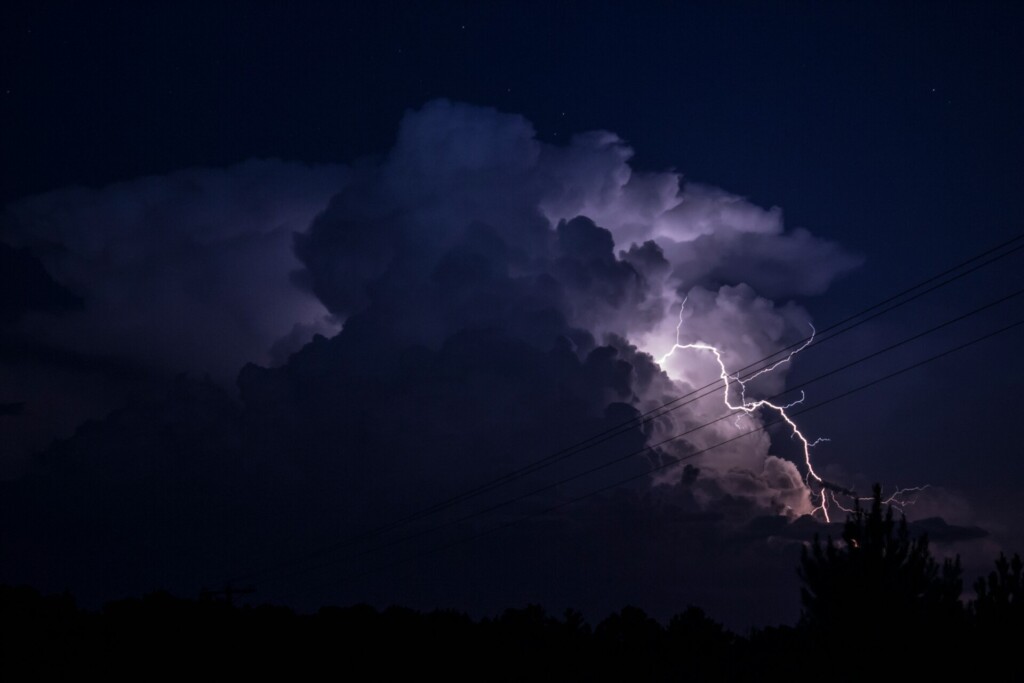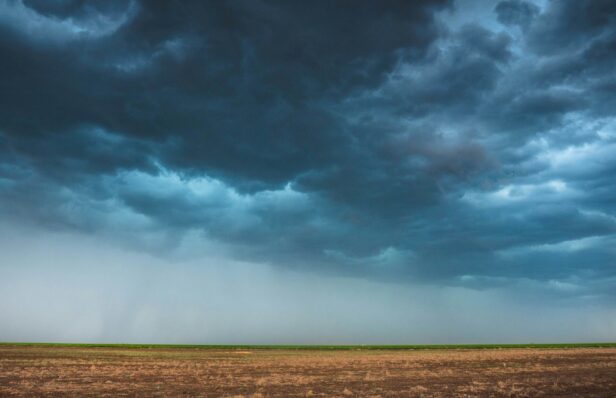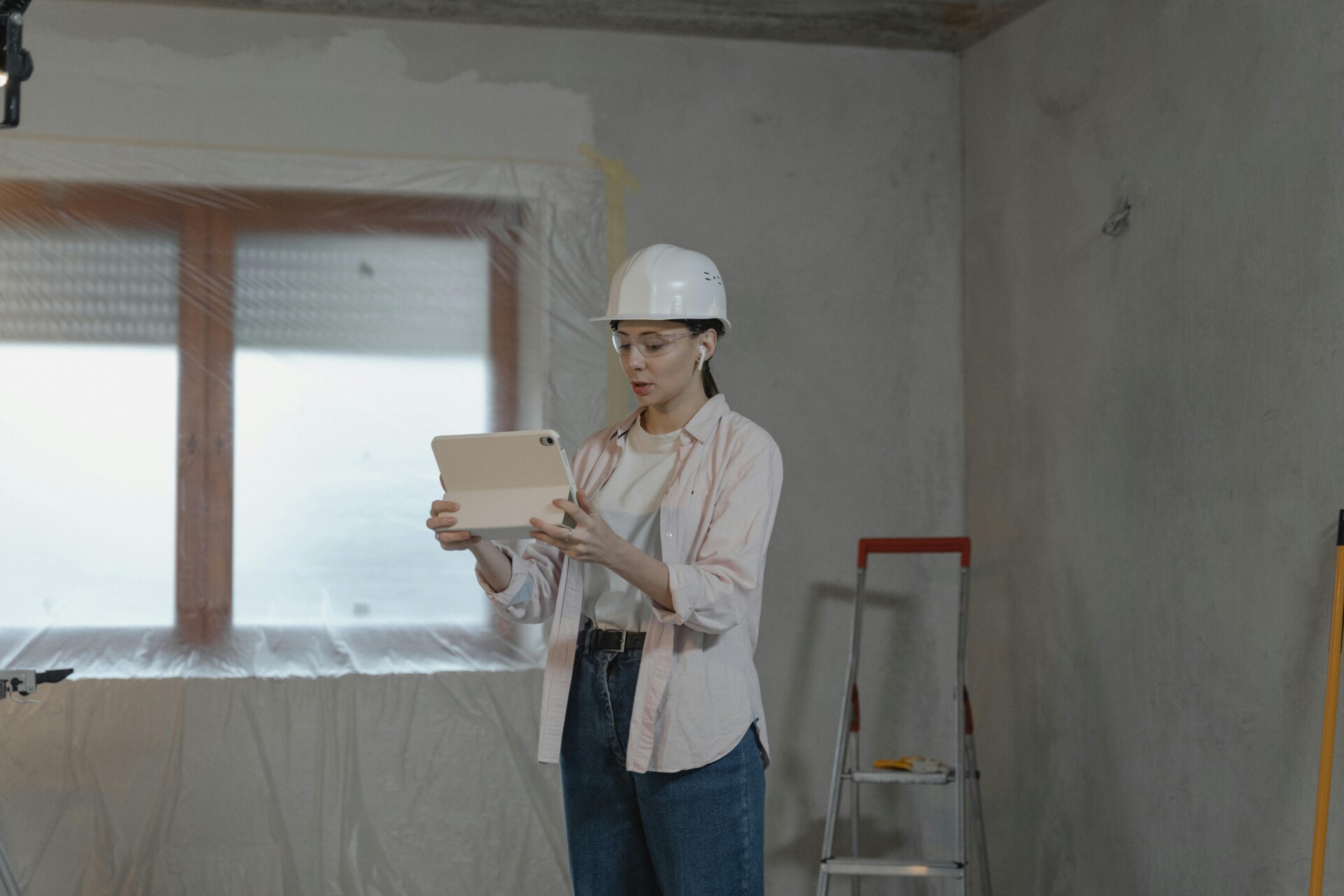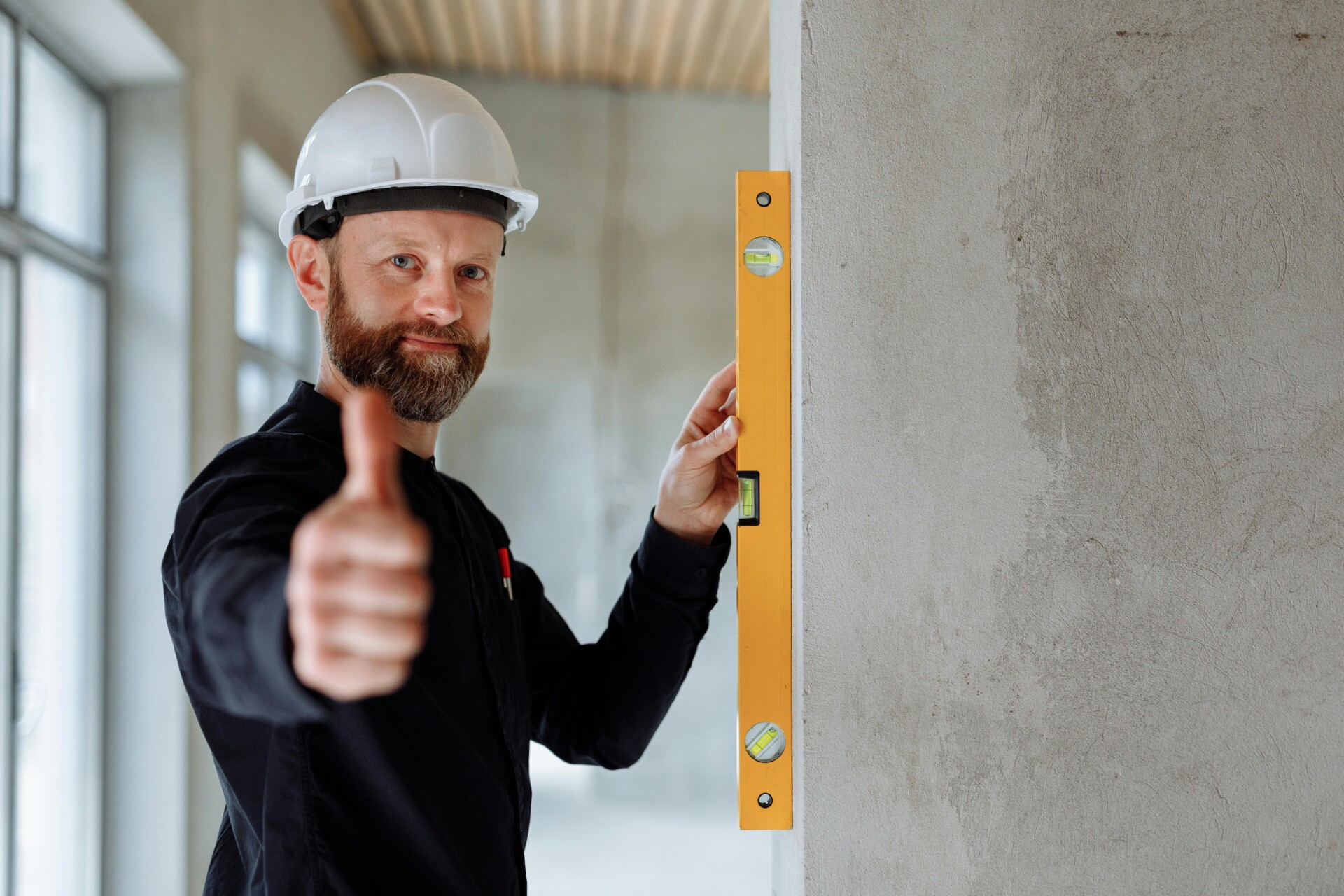When planning construction projects in Texas, the weather poses a formidable and unpredictable challenge. Our teams face a range of meteorological obstacles, from sudden downpours turning job sites into quagmires to heat waves that push workers and equipment to their limits. We also can’t overlook the occasional Arctic blast or Gulf hurricane that can halt progress.
These weather events affect more than just individual tasks; they impact the entire project timeline. A rainy week can waterlog materials, delaying concrete pours or steel erection. Extreme heat can reduce productivity and create safety concerns, limiting work hours, while even mild conditions like high winds can restrict crane operations, disrupting carefully planned schedules.
At EB3 Construction, successful project management in Texas calls for an observant approach to both short-term forecasts and long-term climate trends. We analyze historical weather data to identify seasonal patterns and plan accordingly. For example, we might prioritize exterior work during drier months or schedule interior finishes during the peak summer heat.
Adaptability remains essential. The National Weather Service’s 2025 spring outlook predicts warmer and drier than normal conditions for much of Texas. While this may reduce rain delays, it could exacerbate other challenges like dust control and increased water needs for curing concrete. We continuously refine our approach, using real-time weather data and forecasting tools to make informed decisions about resource allocation and task sequencing.
By anticipating weather risks and incorporating flexibility into our schedules, we aim to keep projects on track despite unexpected challenges from Mother Nature. It’s a complex balance of planning and adaptation, essential for delivering projects on time and budget in Texas’s dynamic climate.
How Do Rain and Storms Affect Construction Timelines in Texas?

Texas is known for its frequent and intense rainstorms, particularly during the spring and fall. These heavy downpours and flash floods pose significant challenges for construction projects across the state. When storms hit, they transform worksites into muddy, hazardous environments that halt progress.
The impact of rain on construction timelines is multifaceted. As water saturates the ground, it creates unsafe working conditions that put crews at risk. Visibility drops, making it difficult to operate heavy machinery safely. Meanwhile, muddy terrain impedes the movement of vehicles and equipment, effectively shutting down material transportation to and from the site.
Perhaps most critically, rain renders several key construction phases impossible to execute properly. Foundation work becomes precarious as water destabilizes excavated areas. Site grading cannot proceed when the ground is waterlogged. Concrete pouring – a process that requires precise conditions – becomes unfeasible in wet weather. Moisture can compromise the structural integrity of freshly poured concrete, potentially leading to costly rework down the line.
To mitigate rain-induced delays, we implement comprehensive contingency plans. This often involves temporarily halting all outdoor work during periods of heavy precipitation. We reschedule material deliveries to avoid having supplies arrive when they cannot be properly stored or utilized. Whenever possible, we pivot our crews to focus on indoor tasks that can proceed regardless of external weather conditions.
However, even with strategic planning, the cascading effects of rainstorms inevitably impact overall project timelines. Each day lost to inclement weather delays subsequent phases of construction. In Texas, where spring and fall can bring extended periods of rainfall, these delays can quickly accumulate.
The challenge for construction managers lies in balancing safety, quality, and efficiency in the face of unpredictable weather patterns. While we cannot control the rain, we can control our response. By remaining flexible and having robust contingency measures in place, we aim to minimize disruptions and keep projects moving forward, rain or shine.
| Rainfall Intensity (mm per hour) | Productivity Loss |
|---|---|
| 0.5 | 0% to 10% (majority), up to 25% for pouring slabs |
| 4 | 10% to 25% (most tasks), up to 50% for formwork and rebar, 100% for pouring slabs |
What Challenges Do Heat and Humidity Present to Construction Projects?
The scorching Texas summer brings unique obstacles to construction sites across the state. With temperatures routinely soaring past 90°F and high humidity levels increasing the discomfort, we face a daily battle against the elements to keep projects on track. This extreme heat doesn’t just make for unpleasant working conditions; it creates serious safety risks that demand our constant vigilance.
Worker safety is our top priority when managing construction in these challenging conditions. Intense heat and humidity can quickly lead to exhaustion, dehydration, and the potential for heat-related illnesses. We’ve found that even experienced crew members can succumb to heat stress more rapidly than expected. To combat this, we implement mandatory rest periods, increase water stations throughout job sites, and sometimes reduce working hours during peak heat. While these measures are essential for protecting our teams, they inevitably impact productivity and can extend project timelines.
Beyond the human factor, Texas heat presents significant challenges for construction materials and processes. Concrete, a staple of most projects, becomes particularly temperamental in extreme temperatures. The accelerated curing caused by intense heat can lead to reduced strength and durability if not managed carefully. We often adjust pour schedules to the cooler early morning hours or use specialized additives to control setting times. Similarly, adhesives, sealants, and certain coatings may behave unpredictably or fail to bond properly in high heat conditions.
The humidity common in many parts of Texas compounds these issues. Excessive moisture in the air can interfere with proper curing and drying times for various materials. We’ve encountered situations where interior work like drywall finishing or flooring installation faced delays due to humidity-related moisture concerns. Managing indoor climate control becomes a critical factor in maintaining quality and preventing future issues like mold growth.
To address these challenges, we’ve developed comprehensive heat management protocols. This includes real-time weather monitoring, flexible scheduling that prioritizes heat-sensitive tasks during cooler periods, and ensuring proper storage and handling of temperature-sensitive materials. By anticipating and adapting to the unique demands of the Texas climate, we work to minimize delays without compromising safety or quality.
How Do Hurricanes and Tropical Storms Disrupt Construction Schedules?

Hurricanes and tropical storms pose the most severe weather threats to construction projects in Texas. These extreme events can devastate job sites, causing extensive damage through a combination of high winds, torrential rainfall, and flooding. The impacts extend far beyond the initial physical destruction.
When hurricanes or tropical storms strike, they don’t simply damage structures under construction; they can completely derail project timelines and workflows. High winds may topple cranes or scaffolding, while flooding can submerge equipment and materials. Roads may become impassable, delaying crucial deliveries of supplies and preventing workers from accessing the site. In the most severe cases, construction operations stop entirely, sometimes for days or even weeks.
The disruptions caused by these storms create ripple effects throughout the entire construction process. Even after the immediate danger has passed, saturated ground conditions can hamper heavy equipment usage. Damaged materials may need replacement, leading to further delays. The pausing and restarting of work throws carefully planned schedules into disarray.
What makes hurricanes and tropical storms particularly challenging is their extended season, which stretches from June through November. This six-month window encompasses a significant portion of the calendar year, requiring construction firms to maintain a constant state of readiness and flexibility in their planning.
Experienced construction companies combat these risks by implementing comprehensive emergency preparedness strategies tailored to hurricane threats. These typically include:
- Securing and waterproofing vulnerable construction materials
- Reinforcing temporary structures like scaffolding
- Establishing robust site drainage plans to mitigate flooding
- Scheduling high-risk construction phases—such as roofing or exterior framing—outside of peak storm months whenever possible
- Developing clear communication protocols and evacuation procedures for workers
- Creating contingency plans for project timelines and resource allocation
While these measures can help mitigate some storm impacts, the unpredictable nature of hurricanes and tropical storms means that some level of disruption is often unavoidable. Construction firms must build additional flexibility into their schedules and budgets to account for potential weather-related setbacks, especially for projects in coastal and low-lying areas most vulnerable to these extreme events.
Ultimately, successfully navigating hurricane season requires a proactive approach that combines careful planning, robust preparedness measures, and the agility to adapt when severe weather strikes. By prioritizing safety and building resilience into their operations, construction companies can better withstand the storms that Texas’s climate presents.
| Impact Category | Description |
|---|---|
| Material Damage | Severe damage can require halting production until materials are replaced, increasing costs and project timeline. |
| Equipment Damage | Flooding or high winds can submerge or damage equipment, delaying operations. |
| Site Access | Flooded roads can prevent material deliveries and restrict worker access, further delaying construction. |
| Structural Risks | High winds may topple cranes or scaffolding, creating safety hazards and disruption. |
| Insurance Costs | Increased need for insurance coverage and potential claims for damaged materials and equipment. |
| Preparation and Recovery | Comprehensive strategies involve securing materials, reinforcing structures, and developing evacuation protocols. |
What Impact Do Cold Snaps and Freezing Temperatures Have on Texas Construction?
While less common than sweltering heat or tropical storms, sudden cold snaps and freezing temperatures can disrupt construction timelines across the Lone Star State. These unexpected arctic blasts often catch crews off guard, forcing work to halt, especially when temperature-sensitive materials and processes are involved.
Concrete is particularly vulnerable to cold weather. When temperatures drop significantly, freshly poured concrete may not cure properly, compromising its structural integrity. This can lead to cracking, scaling, and other defects requiring costly removal and replacement. To avoid these issues, we carefully monitor forecasts and may need to postpone concrete pours or use specialized cold weather mixes and curing techniques when we expect frigid conditions.
Other building materials like asphalt, paint, and sealants also behave differently in extreme cold. Asphalt becomes brittle and difficult to work with, while paint and adhesives struggle to bond and dry correctly. This often means rescheduling exterior finishing work for warmer days to ensure quality results.
Beyond material concerns, freezing temperatures wreak havoc on construction equipment. Diesel engines are notoriously finicky in the cold, refusing to start or running poorly. Hydraulic systems also suffer, with fluids thickening and reducing efficiency. Our equipment managers combat this by using engine block heaters, switching to winter-grade fluids, and storing machinery in heated areas when possible.
To minimize cold-related delays, we’ve learned to build extra flexibility into winter project schedules. This might mean front-loading temperature-sensitive tasks during milder fall weather or shifting focus to interior work when arctic fronts blow through. We also maintain a cache of cold weather gear, from heated jackets to portable heaters, to keep crews safe and productive even when the temperatures drop.
While brief cold snaps may only set a project back a few days, extended freezes can lead to more significant timeline disruptions. That’s why we work closely with clients to develop realistic winter construction plans that account for potential weather delays. By anticipating challenges and having contingencies in place, we can better navigate occasional deep freezes without derailing the entire project.
Ultimately, successfully managing cold weather construction in Texas comes down to preparation, flexibility, and a deep understanding of how materials and equipment respond to freezing conditions. It’s a balancing act between maintaining productivity and ensuring quality, requiring constant vigilance and adaptation as winter weather patterns evolve.
Conclusion: Strategic Planning for Texas Weather Challenges

Weather in Texas poses significant challenges for construction projects. Frequent rainstorms, high humidity, hurricane threats, and unexpected cold snaps can disrupt timelines and budgets. These conditions often lead to costly delays, disrupted schedules, and increased expenses. However, construction companies can address these challenges through strategic planning and risk management.
Success depends on a thorough understanding of regional weather patterns and the implementation of proactive measures. Effective strategies include extensive weather monitoring, seasonal planning, flexible scheduling, selection of weather-resistant materials, and incorporating time buffers into project timelines. By adopting these tactics, construction firms can reduce many weather-related risks. The key is partnering with experienced contractors who understand the nuances of Texas’s unpredictable climate and have proven track records of keeping projects on track despite meteorological obstacles.
To learn more about addressing weather challenges in Texas construction, contact EB3 Construction today.




